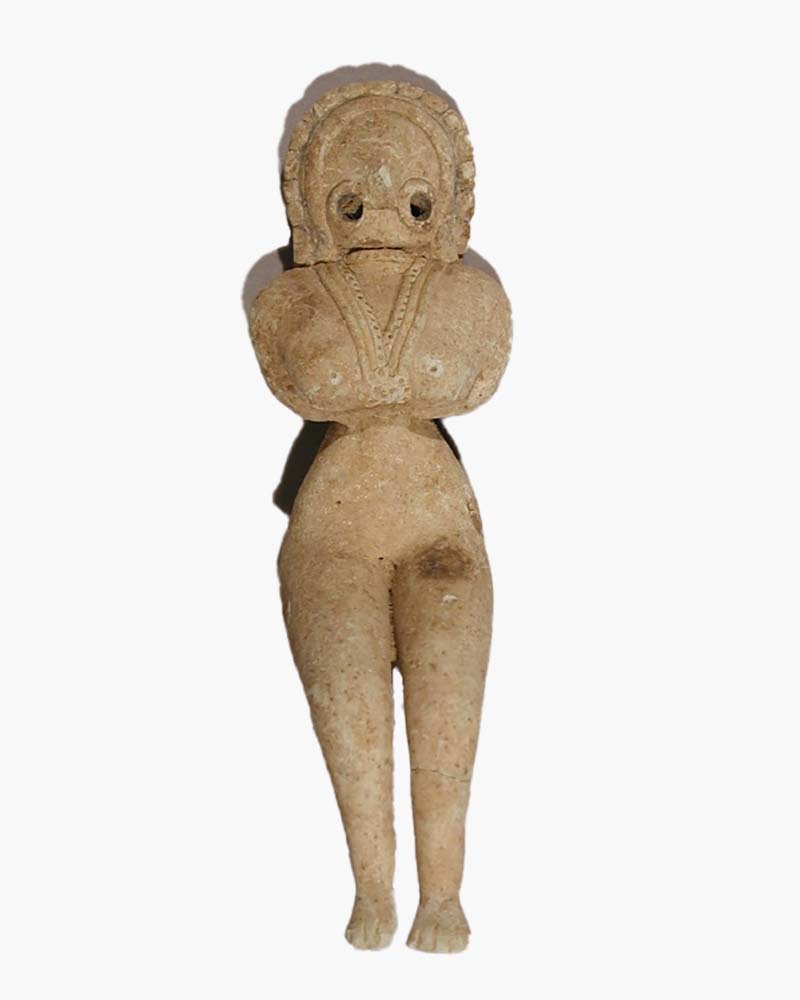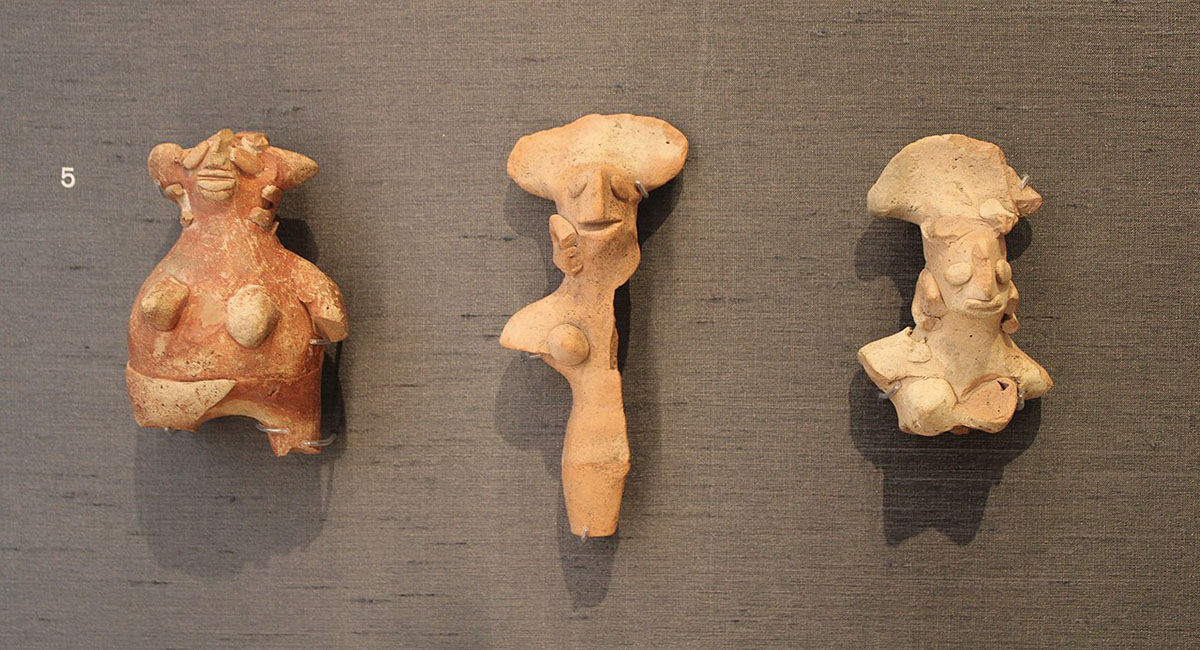ARTICLE
Indus Valley Terracotta Human Figurines
Scholars have classified the female figurines from the phase into two broad categories: the early classic form and the later, figure-eight form. The former typically feature flat bodies adorned with attached ear ornaments and neck ornaments, such as chokers and necklaces, embellished with beads or pendants. The figure-eight forms are more rounded and lack ear ornaments and mouths. These two categories, although differing in their overall form, bear several common characteristics. The standing females are usually depicted holding an infant or with their elbows arched outwards and their hands on their hips. Also typifying this group of figurines are conical breasts and mostly uncovered torsos that are girded at the hips with a decorative belt and a short skirt-like piece of clothing that covers the genitalia. The most notable features, however, are the elaborate hairstyles and the distinctive fan-shaped headdresses, which has been of particular interest to scholars. In contrast to most hairstyles and headwear that were typically devoid of decoration, the fan-shaped headdresses — the real-life equivalents of which were thought to have been fashioned out of textile or even hair — were multiform due to the application of various decorations like cones, flowers, ropes, tiaras, panniers and double-voluted ornaments.
The less numerous male figurines, mostly from the Mature Harappan Phase, are distinguished by their slender form, exaggerated disk-like nipples, headdress and, occasionally, a beard. Exposed genitalia are more common among the earlier seated figurines than the later standing ones. The distinctive male headdresses are usually characterised by double-buns or horns that may be pointed, V-shaped or curved. Depicted sometimes with corded neck ornaments and a loincloth or skirt; and in rarer cases as having both male, female or indistinct attributes — as renderings of infants and children — the gender of the figurines is sometimes ambiguous.
Compared to the human figurines, the anthropomorphic ones are relatively fewer in number and are typically represented as carrying oval or cylindrical objects, believed to represent musical or ritualistic instruments. These figurines, like the former, have been discovered both independently and as a part of larger domestic scenes, in which they are seated on beds, stools or carts, with some engaged in manual work such as grinding.
Unlike the moulded tablets of the time, these figurines were hand modelled, likely using three techniques: pinching, used to create sharper ridges for facial features; appliqué, used to attach clay shapes — for eyes, eyebrows, lips, breasts and jewellery — to the main figure; and incision, used to produce designs and patterns by carving into wet clay. Interestingly, the figurines typically had flattened backs and uneven feet, possibly an intentional feature, which rendered them unable to stand unsupported and allowed only frontal viewing. Almost all terracotta figurines from this period were created out of two vertically joined halves of fine clay, which may have been sourced from the beds of rivers and lakes in the region. Scholars believe that the process and intention behind their creation may have also had a symbolic resonance — the two vertically joined halves, for instance, connoting a Harappan concept of dualism and self-integration, or the conceptual melding of the male and female.
Differing interpretations of this group of terracotta objects, particularly the female figurines, offer different attributions. Some scholars propose a cultural or ceremonial significance and others cite religious symbolisms, some dubiously claiming the figurines to be representations of the Mother Goddess cult. As with so many other cultural artefacts uncovered from the Indus Valley sites, the purpose and meaning of the terracotta human figurines remains a mystery, in large part due to the fact that the Indus script has not yet been fully deciphered.
In total, around 8,500 fragments of figurines have been excavated since 1920, most of which were found in a broken state attributed to wear-and-tear and trampling. Although the figural content of these fragments — now scattered across museums in India, Pakistan and Europe — fail to provide definitive insights, the stylistic and material aspects of the Indus Valley terracotta figurines provide the basis for a broad understanding of the life and material culture of Indus Valley Civilisation.
Bibliography
Our website is currently undergoing maintenance and re-design, due to which we have had to take down some of our bibliographies. While these will be re-published shortly, you can request references for specific articles by writing to hellomapacademy@map-india.org.








